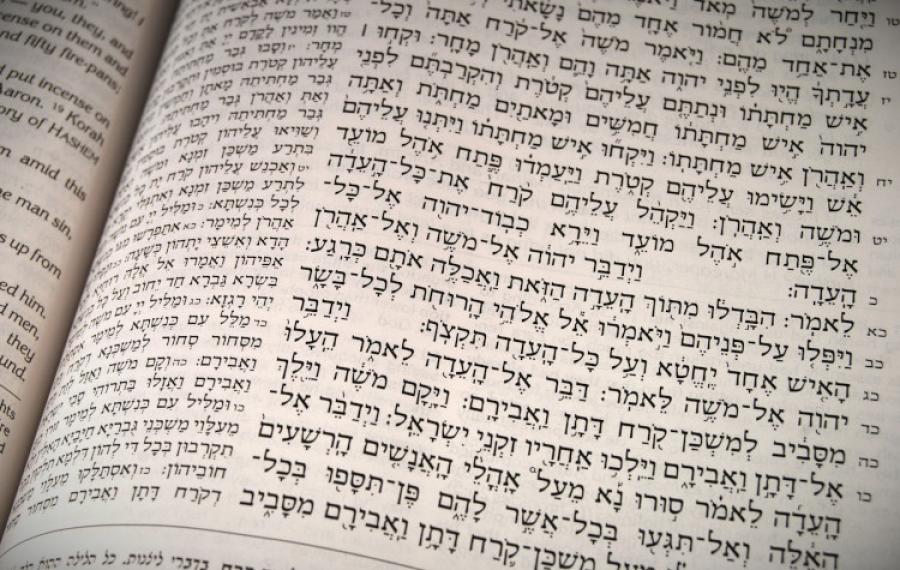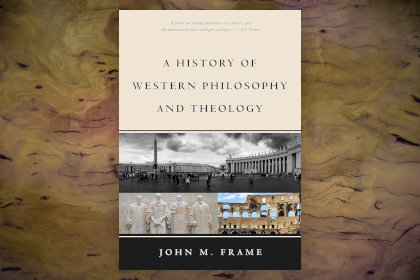The New Birth Midrash, Part Two
Image

Read the series.
(Ezekiel 18:3, 37:9-10; 1 Samuel 10:6, John 3:1-11)
As we continue on the subject of the New Birth (aka, regeneration), we can note that Jesus’ teaching about this miraculous work of the Spirit is based upon midrash from Old Testament texts. He expected Nicodemus, as a rabbi himself, to understand the concept—even before his encounter with Yeshua. Thus the concept of regeneration is not unique to the New Testament. However, Jesus’ terminology—“You must be born again”—is unique.
We have already noted that one Old Testament term corresponding to the “new birth” is “circumcision of the heart.” Another is that of “new heart” and “a new spirit.” Yet the Old Testament terminology doesn’t stop there.
Get a New Heart and a New Spirit: God’s Sovereignty Yet Our Responsibility
The same (sometimes frustrating) paradox we see in the New Testament in evident also in the Old, namely God’s sovereignty in tension with man’s responsibility. Jesus taught about the new birth being beyond our control—like the wind and the rain.
The Apostle John emphasizes the sovereign hand of God in the matter of regeneration when speaking of true believers in the prologue to his Gospel (John 1:12-13, emphasis added):
But to all who did receive him, who believed in his name, he gave the right to become children of God, who were born, not of blood nor of the will of the flesh nor of the will of man, but of God.
Does Jesus put the responsibility for the New Birth squarely upon Nicodemus’ shoulders when He says, “Do not marvel that I said to you, ‘You must be born again’ ” (John 3:7)? Or is Yeshua just providing instruction with no mandate: “If you want to enter the kingdom of heaven, realize only those who are born-again can do so.” I tend to interpret Jesus’ words as a mandate because it replicates a First Testament paradox. Note how Ezekiel 18:31 commands the people to make (or get) a new heart and spirit:
Cast away from you all the transgressions that you have committed, and make yourselves a new heart and a new spirit! Why will you die, O house of Israel?
Note here the idea of regeneration as a personal responsibility. We see the same thing in Deuteronomy 10:16 where the Israelites were commanded to regenerate themselves: “Circumcise therefore the foreskin of your heart, and be no longer stubborn.”
On the other side of the paradox, we see that God Himself promises to regenerate a future generation of Israelites. It is His sovereign doing in Deuteronomy 30:6:
And the Lord your God will circumcise your heart and the heart of your offspring, so that you will love the Lord your God with all your heart and with all your soul, that you may live.
The Wind (Spirit)
In Ezekiel 36:25-27, water (breath) and wind represent a sovereign act of God, signifying cleansing and the bringing of life (spirit) to the regenerated individual (see part 1). Yeshua’s teaching about the New Birth probably employs one of Hillel’s rules of interpretation: “Binyan ab mikathub echad (Building up a “family” from a single text)…A principle is found in several passages: A consideration found in one of them applies to all…”1
A secondary passage from Ezekiel 37:9-10 correlates and may have been in Jesus’ mind:
Then he said to me, “Prophesy to the breath; prophesy, son of man, and say to it, ‘This is what the Sovereign LORD says: Come from the four winds, O breath, and breathe into these slain, that they may live.’” So I prophesied as he commanded me, and breath entered them; they came to life and stood up on their feet—a vast army.
God brings life to the dead by His life enabling wind (Spirit), seemingly coming from nowhere but everywhere. Although in its more (but not completely) literal sense, this is speaking of resurrection, it is also illustrative of regeneration, which is a spiritual resurrection. The most natural meaning of the text is the rejuvenating of the nation of Israel in the end times, IMO. But it nonetheless demonstrates the power of God’s Spirit to bring life, which is the crux of regeneration as well.
The Controversial Example of Saul as Regenerate
Because we debate whether Saul really knew the Lord, we tend to avoid using his example as a case study for regeneration.2 Was this a passage that Jesus may have had in mind, along with the others?
Whatever our viewpoints, it is worth noting the language describing the spiritual work God within Saul. 1 Samuel 10:6, 9-11 document what appears to be regeneration:
Then the Spirit of the Lord will rush upon you, and you will prophesy with them and be turned into another man… When he turned his back to leave Samuel, God gave him another heart. And all these signs came to pass that day…When they came to Gibeah, behold, a group of prophets met him, and the Spirit of God rushed upon him, and he prophesied among them. And when all who knew him previously saw how he prophesied with the prophets, the people said to one another, “What has come over the son of Kish? Is Saul also among the prophets?”
The idea of being “turned into another man” and getting “another heart” – even accompanied by prophesying (an Acts 2 sort of thing), suggests regeneration in Saul.
The Relationship Between Covenants
The subject of the similarities and differences between the New Covenant believer and the Old Covenant believer is complex. James Hamilton has authored quite the paper comparing and contrasting the work of the Spirit (regeneration, indwelling, and empowering) between the Old and New Covenants. I suggest his viewpoint as only a starting point and part of the truth:
Were old covenant believers indwelt by the Holy Spirit? No. They did not need to be. God dwelt in the temple. He was thereby with them. How did old covenant believers become and remain faithful? They became faithful by the regenerating work of the Holy Spirit, which in the OT is described more as ‘circumcision of the heart’ (cf. Jer. 9:25) than as ‘new birth from above’ (cf. John 3:3). They remained faithful not by the Spirit dwelling in them, but by the Spirit dwelling in the temple (Ps. 73:17), where they longed to be (Ps. 116:18–19). Further, the Spirit was active through Israel’s prophets (1 Pet.1:11). As the prophets proclaimed God’s word, the Spirit instructed and admonished God’s people (Neh. 9:20, 30). Under the old covenant, the Spirit gave life and was with the people as he dwelt in the temple. Under the new covenant, the Spirit gives life and dwells in God’s people; they are his temple.3
The Holy Spirit, in both testaments, created a “new heart” and a “new spirit” for the believer. We might refer to this as the new nature or, perhaps more accurately, an intensification and education of our consciences, consciences damaged by the Fall. Our hearts, which were once hard toward God, have become softer hearts of flesh. The Spirit—however He works—works differently under the New Covenant. We do have spiritual advantages under the New Covenant (instituted by Jesus). But the Spirit has, nonetheless, always been active in the lives of believers in both covenants.4
Notes
1 “The Seven Rules of Hillel,” http://www.yashanet.com/studies/revstudy/hillel.htm, accessed 06-24-23.
2 Was Saul truly regenerate, but then sinned so as to lose his salvation, as some Arminians believe? Or was he truly regenerate but disciplined by the Lord and called home early? Or was he never truly regenerate at all? We are going to pass on this conundrum; that is a subject to be dealt with elsewhere.
3 Jame Hamilton, “Were the Old Covenant Believers Indwelt by the Spirit?” jimhamilton.info/wp-content/ uploads/2008/06/hem30-1.pdf, accessed 624-2023. This is also a great summary of differing views by leading evangelicals, past and present.
4 John 14:17 demands we recognize a distinction regarding the location of the Spirit to the believer based upon covenantal distinction, the difference between “with” and “in.” However, it is difficult to fully grasp this distinction when based primarily upon two prepositions, especially since God is not limited by location.
Ed Vasicek Bio
Ed Vasicek was raised as a Roman Catholic but, during high school, Cicero (IL) Bible Church reached out to him, and he received Jesus Christ as his Savior by faith alone. Ed earned his BA at Moody Bible Institute and served as pastor for many years at Highland Park Church, where he is now pastor emeritus. Ed and his wife, Marylu, have two adult children. Ed has published over 1,000 columns for the opinion page of the Kokomo Tribune, published articles in Pulpit Helps magazine, and posted many papers which are available at edvasicek.com. Ed has also published the The Midrash Key and The Amazing Doctrines of Paul As Midrash: The Jewish Roots and Old Testament Sources for Paul's Teachings.
- 155 views

Discussion